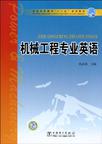机械工程专业英语
出版时间:2010-5 出版社:中国电力出版社 作者:杜必强 编 页数:224
前言
专业英语是大学英语教学的重要组成部分,是促进学生完成从学习过渡到实际应用的有效途径。教育部于2007年颁布了《大学英语课程教学要求》,该文件中将大学英语的教学要求分为三个不同的层次——一般、较高和更高要求,并分别对这三个层次的英文文献阅读能力提出了不同的要求。强调大学英语课程要保证学生在整个大学期间的英语语言水平稳步提高,要能满足他们专业知识的发展,并提出应注重培养自主学习能力的教学思想和实践的转变。根据这个精神,编者编写本书,以帮助学生通过专业外语的学习能顺利阅读有关专业的原版教科书、参考书及其他参考资料,并满足高等院校机械类专业学生专业外语教学的需要和机械工程技术人员学习英语的要求。 全书共精选专业文章49篇,分为七部分,每部分各有侧重,读者可根据自己的专业领域选取不同部分进行阅读。主要内容包括:第一部分8篇,以金属材料及热处理方面的文章为主;第二部分包含了9篇有关机械零件方面的文章;第三部分的7篇文章则侧重于机械设计理论方面;第四部分的8篇文章为有关机械制造技术的基础知识及理论:第五部分是有关各种先进制造技术方面的6篇文章;第六部分10篇,侧重于机电控制技术;第七部分的ll篇文章则属于扩展阅读,立足于反映出机械专业技术的现状和发展趋势,同时选取了部分与电力行业密切相关的文献材料。 本书内容新颖、取材精练、难度适中,所选内容涵盖了学生所学习过的专业知识,又有所拓展和延伸,从而既可提高读者的英语阅读水平,又能使读者了解学科前沿。
内容概要
本书为普通高等教育“十一五”规划教材。本书共精选文章49篇,分为七部分,每部分各有侧重,读者可根据自己的专业领域选取不同部分进行阅读。主要内容包括:金属材料及热处理,机械零件,机械设计理论,机械制造技术的基础知识及理论,各种先进制造技术,机电控制技术以及扩展阅读。 本书可作为高等学校本科机械工程专业英语的教材,也可供高职高专院校相关专业师生和工程技术人员参考。
书籍目录
前言Part 1 Mechanical Materials and Heat Treatment 1.1 Ferrous Metals and Their Use 1.2 Nonferrous Metals 1.3 Ceramics and Other Materials 1.4 Castings 1.5 Forging 1.6 Welding 1.7 Heat Treatment 1.8 Engineering MaterialPart 2 Mechanical Elements and Mechanisms 2.1 Transmission 2.2 Gear 2.3 Belt Drive 2.4 Coupling 2.5 Bearing 2.6 Hydraulic Machineries and Hydraulic Circuits 2.7 Hydraulic Pump and Control Valve 2.8 Other Components of Hydraulic System 2.9 Properties of Hydraulic Fluids .Part 3 Mechanical Design 3.1 Mechanical Design 3.2 Elementary Rules of Mechanical Design 3.3 Engineering Tolerance 3.4 Design Method (I) 3.5 Design Method (II) 3.6 Reliability Engineering 3.7 Computer Aided DesignPart 4 Mechanical Manufacturing 4.1 Metal Working 4.2 Tool Bit 4.3 Materials for Cutting Tools 4.4 Tool wear 4.5 Cutting fluid 4.6 Lathe 4.7 Speeds and Feeds 4.8 Computer Aided ManufacturingPart 5 Advanced Manufacturing 5.1 Computer Integrated Manufacturing 5.2 Flexible Manufacturing System 5.3 Agile Manufacturing 5.4 Virtual Manufacturing 5.5 Intelligent Manufacturing 5.6 Concurrent EngineeringPart 6 Mechatronics 6.1 Introduction to Control Systems 6.2 Structure and Characteristics of Control System 6.3 Compensation Techniques 6.4 Digital Control 6.5 Building Appropriate Mathematical Models for a Control System 6.6 PLC and Its History 6.7 Mechatronic Research and Development 6.8 Numerical Controlled (NC) Machines 6.9 Industrial Robot 6.10 Benefits of MechatronicsPart 7 Extensional Reading 7.1 New Austenitic Stainless Tube with Superior High Temperature Strength 7.2 Automated Guided Vehicle 7.3 Reverse Engineering 7.4 Lean Manufacturing 7.5 Enterprise Resource Planning 7.6 Other Manufacturing Technology 7.7 Sustainable Design 7.8 Knowledge-based Engineering 7.9 Computer Simulation 7.10 Who Owns Mechatronics? 7.11 Coal Handling System and Equipment for Power Stations in ChinaReferences
章节摘录
If variables such as cutter geometry and the rigidity of the machine tool and its toolingsetup could be ideally maximized (and reduced to negligible constants), then the amount ofpower (that is, kilowatts or horsepower) available to the spindle would determine themaximum speeds and feeds possible for any given workpiece material and cutter material. Ofcourse, in reality those other variables are dynamic and not negligible; but there is still acorrelation between power available and feeds and speeds employed. Cutting speed may be defined as the rate (or speed) that the material moves past thecutting edge of the tool, irrespective of the machining operation used —— the surface speed. Acutting speed for mild steel, of 100 ft/min (or approx 30 meters/min) is the same whether it isthe speed of the (stationary) cutter passing over the (moving) workpiece, such as in a turningoperation, or the speed of the (stationary) workpiece moving past a (rotating) cutter, such as ina milling operation. What will affect the value of this surface speed for mild steel are thecutting conditions, For a given material there will be an optimum cutting speed for a certain set of machiningconditions, and from this speed the spindle speed (RPM) can be calculated.
图书封面
评论、评分、阅读与下载
用户评论 (总计2条)
- 还没收到,应该不错。
- 印刷质量一般般,书的内容还可以
